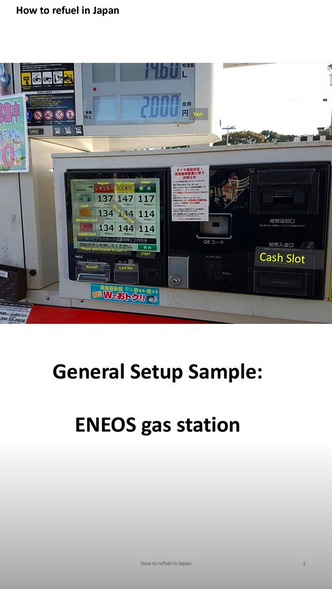Japan is a very mountainous country that easily strains the breaks of your car. If you want to drive safely and be able to rely on your breaks when it counts, get used to transmission breaking: switch to a lower gear and let the transmission/engine slow down the car, before or while you are using the brakes. This way the brakes are not overused and or don’t get to hot on the bottom of a long decline, when there is suddenly a reason to stop.
Paperwork needed to be allowed to drive in Japan:
Europeans have to aquire a translated copy of their drivers license for Japan. This can only be done in Japan. Contact your car rental company for assistance. It costs about 75 EUR and takes usually up to 5 days to get your license translated.
Traffic:
Compared to other countries, traffic and drivers tend to be very relaxed and polite. Exceptions to the rule are some of the truck drivers.
If you have driven in any major city in the US or EU you have nothing to worry about. Japanese traffic is usually as the culture of the people driving: relaxed and polite. Fit in with the same mindset, and you will have a very pleasant experience, even driving Tokyo.
Japan drives on the left side of the road like the UK or Australia.
Tokyo can have some heavy traffic in rush our, that just means though, that you are standing in line with the others… no stress factors there.
Gas (stations):

During work hours Japanese gas stations are quite easy to navigate. There is usually staff servicing motorists. You don’t have to get out of your car.
You should know what kind of fuel you need.
“Regura” = lead free 98 Oct fuel
“Mantan o shitte onegai shimasu” = “Full tank please
At night it get’s fun. If the fuel station is not serviced there are 24h vending machines. The ones I encountered had Japanese only user interfaces. Google translate is not always a good help here as it tends not to be able to read colourful buttons. So if you don’t know your basic Japanese, better fill up during the day or on serviced stations or use the guide I prepared on instagram.
Car Wash
In case you need to clean your van, google self-service car wash. Normally they pop up around large cities and are fed with 100 to 500 yen coins.
Parking
Parking in the big cities. If there is a device to drive on: There is usally a ramp on each parking spot the raises once you parked the car. At the parking entrance you pick the number of the parking spot your car is standing on at the vending machine. Once payed the ramp below your car is lowered for you to leave.
Parking prices are displayed at every parking lot. They can range from 5 EUR a day to 30 EUR an hour (in Tokyo)
When parking in fenced areas, make sure you know the opening times of the parking lot. Not all parking lots are open 24/7.
Toll roads
Highways are toll roads in Japan. Expect them to be very expensive. Even for European standarts. 100 km can easily equal the price you pay for a full tank of gasoline. I only recommend to use them when it’s really worth the while to shortcut to a new area you want to visit. Highways feature toll booths at entrances and exits. They are marked as manned or credit card. Cost depend on vehicle size and distance traveled.